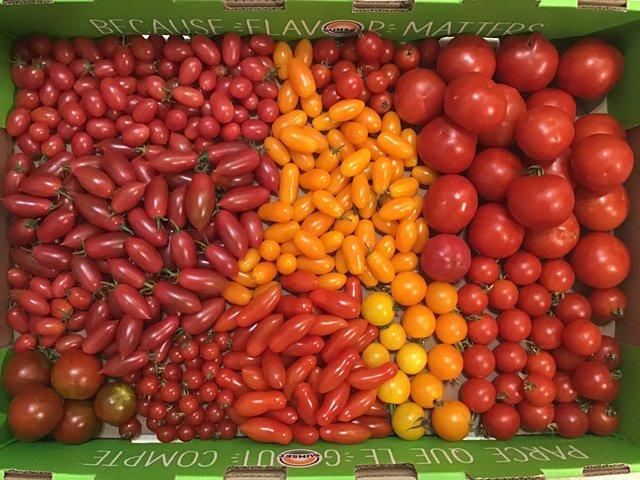
 2
2




 2
2




 4
4




 2
2




Chris Tully
Java developer, Handy man, Gardener
 1
1




EBo --
Master Gardener (Prince George's County, MD, USA)
 2
2




Living in Piedmont NC, attempting restoration of four acres




EBo --
Master Gardener (Prince George's County, MD, USA)
 6
6




 6
6




We have a little farm with Jacobs Sheep, guinea fowl, geese, ducks, Muscovy Ducks & chickens. We've have more over the years but are down-sized now and retired. There's still some gardening going on & a small orchard but it's mostly about the grandkids now.
 4
4




 4
4




 3
3




 14
14










 7
7




It's never too late to start gardening, and even the smallest project is worthwhile.
 3
3




 3
3




Ellen
Music, Farming, Community! How do I choose? Oh wait, I choose all three.....
 4
4




Ellen Schwindt wrote:Last year I grew some ginger in my cold frame. This year I planted some, but it hasn't come up yet.
 6
6





 7
7




 11
11





"I live on Earth at present, and I don't know what I am.I know that I am not a category.I am not a thing—a noun.I seem to be a verb, an evolutionary process—an integral function of the universe."
Buckminster Fuller
 11
11










 13
13








 2
2




 2
2




EBo --
Master Gardener (Prince George's County, MD, USA)
 3
3





 7
7




Ebo David wrote:...transplanting/resprouting stuff from the store could spread disease and pathogens. You might want to look up techniques to sterilize and/or disinfect seeds before using them.
 5
5




William Bronson wrote:are they yams or are the sweet potatoes.
 2
2




Patrick Mann wrote:I saw the phase "grocery store cover crop" somewhere on permies. That's what I do. Flax is my favorite - I buy pounds of it for cover cropping.
JayGee
 8
8




Jesse Glessner wrote:
Patrick Mann wrote:I saw the phase "grocery store cover crop" somewhere on permies. That's what I do. Flax is my favorite - I buy pounds of it for cover cropping.
Interesting! I always thought of Flax as being a vertical plant, something like oats or wheat. I just checked out "growing Flax" on the net and it truly does look like a good 'cover crop' in the photos and it listed info that the plants can grow very long.
By the way, Field Radishes are also a great 'cover crop' as the roots can go as far down as 4 ft. into the soil - opening up pathways for other crops root systems as well as being good drainage.
Zone 6, 45 inches precipitation, hard clay soil




 3
3




EBo --
Master Gardener (Prince George's County, MD, USA)
 6
6




Zone 6, 45 inches precipitation, hard clay soil




 2
2




EBo --
Master Gardener (Prince George's County, MD, USA)
 3
3




 5
5




Beth Bauer wrote: Then I read somewhere on the Internet (so you know it’s true) that most seeds from grocery store avocados will never produce a plant that bears fruit. Has anyone had any luck ever sprouting their own fruitful avocado tree?
 6
6




Nothing ruins a neighborhood like paved roads and water lines.
 3
3




Mark Reed wrote:@ Tom Knippel, I have a very similar landrace of cherry type tomatoes in my garden. Mine started with an accidental cross between pimpinellifolium and who knows what and in successive generations made all kinds of shapes and colors. Then two or three years ago the woman bought two different kinds from the store. It was in winter, and those tomatoes were grown in Canada, apparently in a heated and artificially lighted greenhouse. Anyway, they quite surprisingly tasted good, so I planted the seeds and mixed them up with my older landrace. A tomato that came in seeds from Joseph Lofthouse that I named Captain Crunch and a weird, very stalky little tomato that I think came from you is in there too. I was in hopes that stalky one would make bigger tomatoes and not need staked but it turned into cherry type instead. How knows, maybe it crossed with something else or was already crossed when I got it. I'm like you in that I don't pay cherry tomatoes much attention, I just eat them as snacks while working in the garden.
I usually don't even plant them as there are always so many volunteers. I've started some this year because three different ones showed up last year that the woman here really liked. It might be fun, but doubt I'll ever mess with it to plant a big patch of older seed just to see how many different kinds show up.
 4
4




Nothing ruins a neighborhood like paved roads and water lines.
 6
6




 2
2





|
Spare the rod, spoil the child. Here, use this tiny ad named Rod:
The new gardening playing cards kickstarter is now live!
https://www.kickstarter.com/projects/paulwheaton/garden-cards
|








